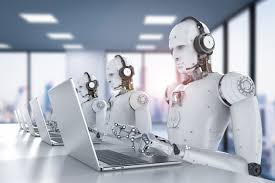Source: exclusive.multibriefs.com
According to Zion Market Research, the global cloud-based payroll market “is expected to generate around USD 13,374 million by 2026, at a CAGR of around 6.8% between 2019 and 2026.”
Though cloud-based payroll software is the industry’s biggest disrupter thus far, artificial intelligence (AI) isn’t too far behind.
Artificial intelligence refers to technology designed to perform tasks needing some degree of intelligence to accomplish. In their revolutionary textbook, “Artificial Intelligence: A Modern Approach,” Russell and Norvig explore four schools of thought that historically define AI:
- Thinking humanly
- Thinking rationally
- Acting humanly
- Acting rationally
AI systems mimic human intelligence, to varying degrees. For instance, there’s artificial narrow intelligence, artificial general intelligence, and artificial superintelligence — which are progressively advanced in that order.
AI’s Contribution to the Payroll Function
In 2017, PwC reported that “business leaders believe AI will be a key contributor to gaining a business advantage in the future.” Further, a 2018 report by Ernst & Young states that HR executives are confident that combining HR administrative functions (including payroll) with AI will enhance the employee experience.
Most notably, in a 2019 survey by Robert Half Finance & Accounting, 47% of CFOs predicted that payroll will benefit the most from AI integrations. The top five effects these CFOs expect AI to have over the next three years are:
- Eliminates human error (57%)
- Lowers costs (56%)
- Boosts employee efficiency and output (50%)
- Decreases burden on finance and accounting professionals, allowing them to focus on higher value work (49%)
- Improves the bottom line (43%)
It’s not hard to see why CFOs rank “eliminates human error” as No. 1. Payroll processing involves managing huge data sets, which are always shifting due to ever-changing regulations. By automatically applying payroll laws as they change, AI drastically reduces the risks of manual payroll errors while enhancing compliance.
Additionally, timekeeping systems with specific AI features can track and compute employees’ hours worked and pay rates and then send the information to payroll for processing, without employees having to input certain data or the payroll preparer having to make manual calculations.
Many AI systems have problem-solving and predictive abilities, which enable business leaders to make informed, future-thinking decisions. For instance, through machine learning, AI can spot the reasons behind payroll mistakes so new incidences can be minimized or eradicated.
AI can also provide different options for solving a payroll problem plus demonstrate the implications of each suggestion. Moreover, AI predictive tools can foresee whether a company is likely to exceed its payroll budget so preventive measures can be taken.
To top it off, some employers are incorporating AI into their compensation decisions. According to an article published by SHRM, artificial intelligence can establish compensation metrics for employee rewards plus evaluate massive amounts of labor market data to deliver targeted, current, and competitive pay rates.
Despite these strengths, there’s a lot of fear by industry professionals that AI will replace humans in payroll.
What Could Go Wrong?
While AI is extremely valuable to the payroll function, the process still requires human presence.
Employment regulations are constantly evolving, gig workers are on the rise, and business environments have gotten more complex as globalization continues to trend. However, AI systems respond according to how they are taught. As Ernst & Young aptly puts it, “It does what you want it to do.” Therefore, the program is susceptible to bias, and it will take a human to ensure complete payroll accuracy.
Note, as well, that AI is still in the development stage, which means it’s nowhere near perfect. If certain tools are incorrectly programmed or the system fails to consider relevant factors, you will end up with inaccurate information.
Drawing the Line
There needs to be a distinct, balanced line between how much reliance is placed on AI in a payroll environment and which areas are non-negotiable when it comes to human involvement.
The American Payroll Association says that due to AI and automation, payroll departments will have fewer clerks and data entry workers in the future. But there will still be a need for humans to handle creative and more mentally demanding payroll tasks, especially in nonroutine situations.
There’s also the human interaction side of payroll, which is often overlooked. Managers, employees, and business partners don’t always want to speak with a machine — no matter how sophisticated — when communicating with the payroll department. They want a living, breathing human, to whom they can relate.
